Yarrow, Angel Flower
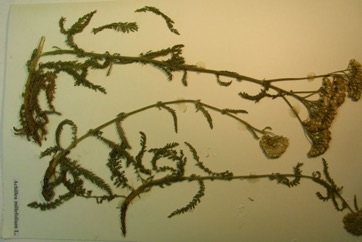
A temperate plant. The plant is native to Europe. It suits most soil conditions. It is drought and frost resistant. It grows best in well drained soils. It suits hardiness zones 3-10. Hobart Botanical Gardens. Tasmania Herbarium.
Also known as:
Ajenquillo, Akarkhara, Altamisa, Aster yaro, Biranjasif, Bunch of Daisies, Chopandiga, Civanpercemi, Falsa altamisa, Gandana, Hajdučka trava, Herezan, Hundred-leaved grass, Lule te bardha, Milenrama, Milfoil, Milhojas, Momadnu, Navadni rman, Plumilla, Raudrohi, Rojmari, Rooamari, Sanguinary, Shi, Soldier’s Woundwort, Sporiš, Thousand Leaf, Verihein, Wodaa kwasiba
Edible Portion
- Leaves, Herb, Spice, Vegetable, Flowers - tea
Where does Yarrow grow?
Found in: Africa, Alaska, Albania, Argentina, Asia, Australia, Austria, Balkans, Bolivia, Bosnia, Botswana, Brazil, Britain, Bulgaria, Canada, Caucasus, Central Asia, Chile, China, Croatia, Denmark, Dominican Republic, Estonia, Europe, Falklands, France, Georgia, Germany, Greece, Greenland, Hawaii, Hungary, Iceland, India, Indonesia, Ireland, Italy, Kazakhstan, Korea, Lithuania, Luxembourg, Macedonia, Mediterranean, Mexico, Mongolia, Netherlands, New Zealand, North America, Norway, Pacific, Pakistan, Poland, Portugal, Romania, Russia, Scandinavia, SE Asia, Serbia, Slovenia, South America, Spain, Sweden, Switzerland, Tasmania, Turkey, Ukraine, Uruguay, United States, Uzbekistan, Venezuela, West Indies
Notes: This one is used in medicine. It contains inulin that produces fructose and therefore doesn't boost blood glucose. There are about 85-100 Achillea species. They are temperate in Europe and Asia.
Status: It is sold in local markets. Foraged plants are provided to restaurants in Sweden.
Growing Yarrow, Angel Flower
Cultivation: It can be grown by dividing the rootstock. It is grown from seed. Seed germinate in 1-3 months. Seedlings can be transplanted. Plants can be grown from cuttings.
Edible Uses: The leaves are eaten in small quantities to make a cool somewhat bitter addition to salads. The fine leaves stripped off the stems are also boiled well then eaten. (It has a reputation as a herb in medicine). The dried leaves are also used for tea. They are also used as a hops substitute. The young leaves are cooked as a vegetable. They are also used for pickles. The flowers are used in herbal teas and lemonade. They are also fried in butter and sprinkled with sugar or orange juice. Caution: It should probably not be eaten in significant quantities nor for extended periods of time as it can cause rashes.
Nutrition Info
per 100g edible portion| Edible Part | Energy (kcal) | Protein (g) | Iron (mg) | Vitamin A (ug) | Vitamin c (mg) | Zinc (mg) | % Water |
|---|---|---|---|---|---|---|---|
| Leaves - flavour | - | - | - | - | - | - |
Yarrow, Angel Flower Photos

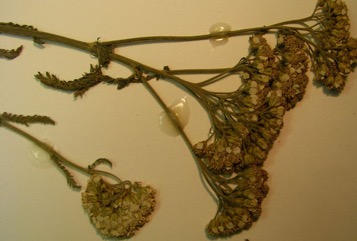
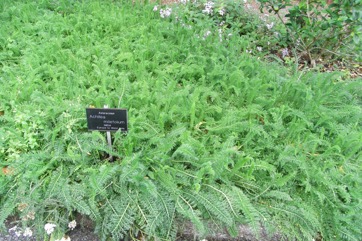
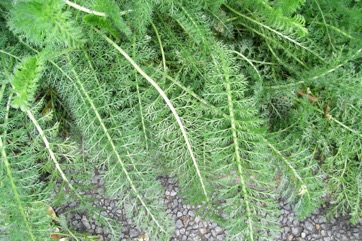
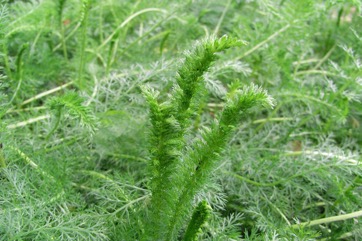
References
Abbet, C., et al, 2014, Ethnobotanical survey on wild alpine food plants in Lower and Central Valais (Switzerland). Journal of Ethnopharmacology 151 (2014) 624–634
Ambasta S.P. (Ed.), 2000, The Useful Plants of India. CSIR India. p 10
Bircher, A. G. & Bircher, W. H., 2000, Encyclopedia of Fruit Trees and Edible Flowering Plants in Egypt and the Subtropics. AUC Press. p 6
Blamey, M and Grey-Wilson, C., 2005, Wild flowers of the Mediterranean. A & C Black London. p 442
Bodkin, F., 1991, Encyclopedia Botanica. Cornstalk publishing, p 44
Bremness, L., 1994, Herbs. Collins Eyewitness Handbooks. Harper Collins. p 136
Brickell, C. (Ed.), 1999, The Royal Horticultural Society A-Z Encyclopedia of Garden Plants. Convent Garden Books. p 71
Brown, D., 2002, The Royal Horticultural Society encyclopedia of Herbs and their uses. DK Books. p 99
Burnie, G & Fenton-Smith, J., 1999, A Grower's Guide to Herbs. Murdoch Books. p 75
Bussman, R. W., et al, 2016, A comparative ethnobotany of Khevsureti, Samtskhe-Javakheti, Tusheti, Svaneti, and Racha-Lechkhumi, Republic of Georgia (Sakartvelo), Caucasus. Journal of Ethnobiology and Ethnomedicine (2016) 12:4
Bussman, R. W. et al, 2017, Ethnobotany of Samtskhe-Javakheti, Sakartvelo (Republic of Georgia), Caucasus. Indian Journal of Traditional Knowledge Vol. 16(1) pp 7-24
Cerne, M., 1992, Wild Plants from Slovenia used as Vegetables. Acta Horticulturae 318
Christanell, A., et al, 2010, The Cultural Significance of Wild Gathered Plant Species in Kartitsch (Eastern Tyrol, Austria) and the Influence of Socioeconomic Changes on Local Gathering Practices. Chapter 3 in Ethnobotany in the New Europe. Berghahn Books.
Cordero, S. E., Abello, L. A., & Galvez, F. L., 2017, Plantas silvestres comestibles y medicinales de Chile y otras partes del mundo. CORMA p 135
Couture, M. D., 1978, Recent and Contemporary Foraging Practices of the Harney Valley Paiute. Thesis, Portland State University
Cundall, P., (ed.), 2004, Gardening Australia: flora: the gardener's bible. ABC Books. p 91
Curtis, W.M., 1963, The Students Flora of Tasmania Vol 2 p 351
Dogan, Y., & Nedelcheva, A., 2015, Wild plants from open markets on both sides of the Bulgarian-Turkish border. Indian Journal of Traditional Knowledge. Vol. 14(3): 351-358
Dolina, K. & Luczaj, L., 2014, Wild food plants used on the Dubrovnik coast (south-eastern Croatia) Acta Soc Bot Pol 83(3):175–181
Facciola, S., 1998, Cornucopia 2: a Source Book of Edible Plants. Kampong Publications, p 32
Hedrick, U.P., 1919, (Ed.), Sturtevant's edible plants of the world. p 23
http://nordicfood lab/org/blog/2102/9/wild-edible-plants-an-overview
Hussey, B.M.J., Keighery, G.J., Cousens, R.D., Dodd, J., Lloyd, S.G., 1997, Western Weeds. A guide to the weeds of Western Australia. Plant Protection Society of Western Australia. p 88
Irving, M., 2009, The Forager Handbook, A Guide to the Edible Plants of Britain. Ebury Press p 138
Janaćković, P. et al, 2019, Traditional knowledge on plant use from Negotin Krajina (Eastern Serbia): An ethnobotanical study. Indian Journal of Traditional Knowledge Vol 18 (1), pp 25-33
Kiple, K.F. & Ornelas, K.C., (eds), 2000, The Cambridge World History of Food. CUP p 433, 1884
Lamp, C & Collet F., 1989, Field Guide to Weeds in Australia. Inkata Press. p 4
Lazarides, M. & Hince, B., 1993, Handbook of Economic Plants of Australia, CSIRO. p 8
Loughmiller, C & L., 1985, Texas Wildflowers. A Field Guide. University of Texas, Austin. p 46
Low, T., 1991, Wild Herbs of Australia and New Zealand. Angus & Robertson. p 77 (Drawing)
Luczaj, L. et al, 2012, Wild food plant use in 21st century Europe: the disappearance of old traditions and the search for new cuisines involving wild edibles. Acta Soc Bot Pol 81(4):359–370
Luczaj, L., et al, 2015, Wild food plants and fungi used by Ukrainians in the western part of the Maramureş region in Romania. Acta Soc Bot Pol 84(3):339–346
Mabey, R., 1973, Food for Free. A Guide to the edible wild plants of Britain, Collins. p 87
MacKinnon, A., et al, 2009, Edible & Medicinal Plants of Canada. Lone Pine. p 357
Malezas Comestibles del Cono Sur, INTA, 2009, Buernos Aires
Michael, P., 2007, Edible Wild Plants and Herbs. Grub Street. London. p 250
Paczkowska, G. & Chapman, A.R., 2000, The Western Australian Flora. A Descriptive Catalogue. Western Australian Herbarium. p 154
Pieroni, A., 2017, Traditional uses of wild food plants, medicinal plants, and domestic remedies in Albanian, Aromanian and Macedonian villages in South-Eastern Albania. Journal of Herbal Medicine 9 (2017) 81–90
Pieroni, A. & Soukand, R., 2018, Forest as Stronghold of Local Ecological Practice: Currently Used Wild Food Plants in Polesia, Northern Ukraine. Economic Botany, XX(X) pp. 1-21
Plants for a Future database, The Field, Penpol, Lostwithiel, Cornwall, PL22 0NG, UK. http://www.scs.leeds.ac.uk/pfaf/
Polat, R., et al, 2015, Survey of wild food plants for human consumption in Elazig (Turkey). Indian Journal of Traditional Knowledge. Vol. 1(1): 69-75
PROSEA handbook Volume 13 Spices. p 273
Redzic, S., 2010, Use of Wild and Semi-Wild Edible Plants in Nutrition and Survival of People in 1430 Days of Siege of Sarajevo during the War in Bosnia and Herzegovina (1992–1995). Coll. Antropol 34 (2010) 2:551-570
Schunko, C., et al, 2012, Intracultural variation of knowledge about wild plant uses in the Biosphere Reserve Grosses Walsertal (Austria). Journal or Ethnobiology and Ethnomedicine, 8:23
Seidemann J., 2005, World Spice Plants. Economic Usage, Botany, Taxonomy. Springer. p 3
Shikov, A. N. et al, 2017, Traditional and Current Food Use of Wild Plants Listed in the Russian Pharmacopoeia. Frontiers in Pharmacology. Vol. 8 Article 841
Sp. pl. 2:899. 1753
Staples, G.W. and Herbst, D.R., 2005, A tropical Garden Flora. Bishop Museum Press, Honolulu, Hawaii. p 166
Steenbeeke, Greg as part of the Plants Directory project. List of plant species from northern NSW that may be used as food plants p 3
Stern, G., 1986, Australian Weeds. A Source of Food and Medicine. Harper & Row. p 231
Sukarya, D. G., (Ed.) 2013, 3,500 Plant Species of the Botanic Gardens of Indonesia. LIPI p 1052
Upson, R., & Lewis R., 2014, Updated Vascular Plant Checklist and Atlas for the Falkland Islands. Falklands Conservation and Kew.
Urgamal, M., Oyuntsetseg, B., Nyambayar, D. & Dulamsuren, Ch. 2014. Conspectus of the vascular plants of Mongolia. (Editors: Sanchir, Ch. & Jamsran, Ts.). Ulaanbaatar, Mongolia. “Admon“ Press. 334pp. (p. 199-230).
Usher, G., 1974, A Dictionary of Plants Used by Man. Constable. p 16
Vermeulen, N, 1998, The Complete Encyclopedia of Herbs. Rebo Publishers. p 20
Whitney, C. W., et al, 2012, A Survey of Wild Collection and Cultivation of Indigenous Species in Iceland. Human Ecology 40:781-787
World Checklist of Useful Plant Species 2020. Royal Botanic Gardens, Kew
www.ediblewildfood.com